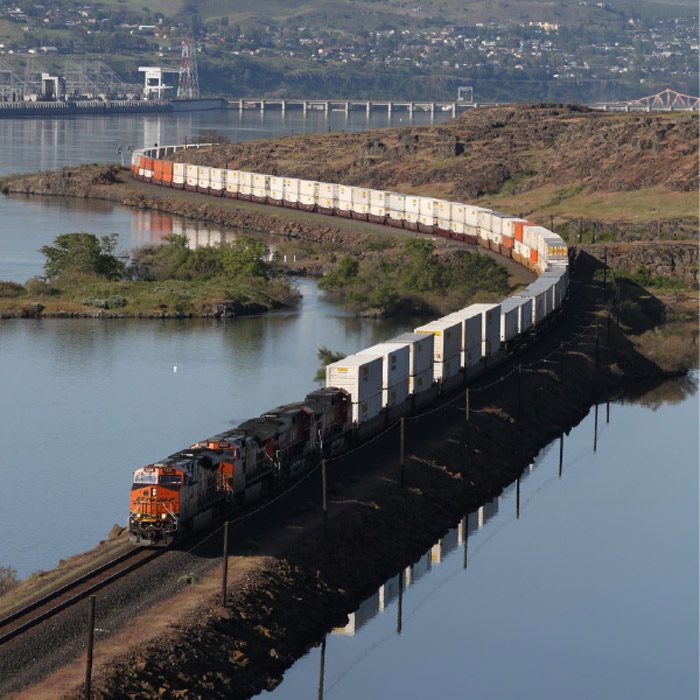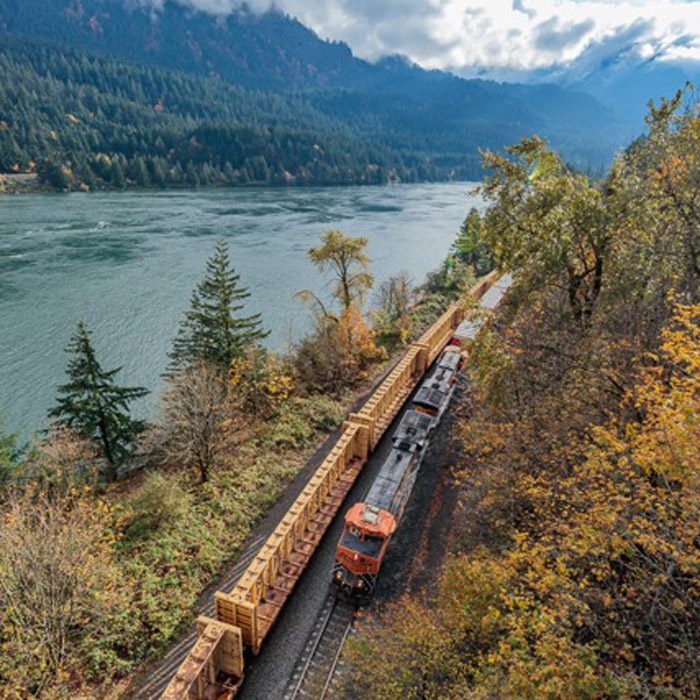BNSF is deploying new technologies designed to reduce emissions, which include:
- Idle control: Idle-control mechanisms reduce air emissions and fuel consumption by automatically shutting down locomotives that aren’t being used. About 90 percent of our more than 8,000 locomotives have idle-control technology, and all new locomotives we purchase are equipped with this technology. We continue to retrofit older locomotives.
- GenSet switch locomotives: The GenSet locomotive is an ultra low-emissions, EPA-certified diesel switch locomotive. This locomotive has three low-horsepower engines that only operate when needed instead of one large engine operating at all times, saving fuel and reducing air emissions. BNSF operates 92 GenSet locomotives in Texas and California.
- Electric wide-span cranes: BNSF was the first U.S. rail carrier to install wide-span cranes. These cranes produce zero emissions on site while generating power each time they lower a load. The wide stance design of these new cranes eliminates as many as six diesel trucks (hostlers) for shuttling containers within the intermodal facility, reducing emissions and improving fuel efficiency. We currently use this technology at our Seattle International Gateway intermodal facility, Memphis intermodal facility, and Logistics Park in Kansas City.
- Intermodal automated gate system: BNSF has installed new intermodal gate technology using digital cameras to record images of the containers, chassis, tractors and unit numbers as they enter the intermodal facility. In addition, drivers are identified using a biometric system. These new gates have increased facility throughput and reduced truck idling time and air emissions by 50 percent. BNSF has installed these gates at its intermodal facilities in Hobart, San Bernardino and Stockton, Calif.; Alliance, Texas; Logistics Park Kansas City, Kansas; Cicero, Corwith and Logistics Park Chicago and Willow Springs, Ill.; and Memphis, Tenn.
- Tier 4: In 2015, BNSF began purchasing Tier 4 locomotives. Tier 4 locomotives meet the most stringent EPA emission standards for locomotives and have 90% less emissions than pre-2000 models.




